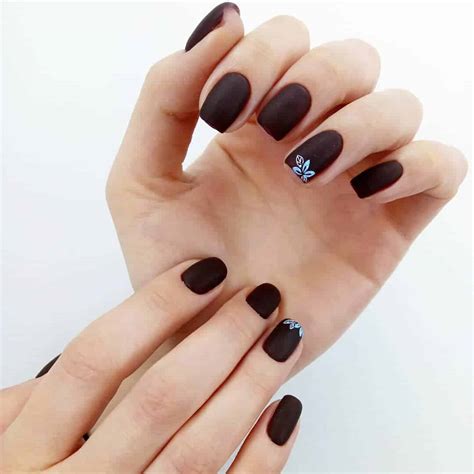Learn about the significance and health implications of lunula. Understand its development, functions, and reasons for its absence.
What is a lunula?
Contents
The lunula is the white crescent-shaped area located at the base of the fingernail. It is also known as the half-moon due to its shape and position. The lunula is most noticeable on the thumb, although it can also be seen on other fingers. It is a part of the nail matrix, which is the area where the nail is formed. The lunula is not actually white, but appears that way because it is the visible portion of the nail root underneath the skin.
The development of the lunula begins in the womb, where it is formed in the nail matrix. As the nail grows, the lunula becomes more visible. However, the lunula may not be visible on all people’s nails, and its appearance can vary based on genetics and the individual’s nail health.
The function of the lunula is not fully understood, although it is believed to play a role in nail growth. The lunula is thought to protect the nail matrix and support the growth of the nail. Some also believe that the lunula can provide important clues about a person’s overall health.
There are various reasons for missing lunula on fingernails. These can include injury or trauma to the nail matrix, as well as certain health conditions or genetic factors. An absence of lunula may also indicate issues with nail health or nutrient deficiencies.
The health implications of no lunula are not fully understood, but some believe that it could be a sign of underlying health issues. It is important to monitor changes in the lunula and discuss any concerns with a healthcare professional.
Development of lunula
The lunula is the white, half-moon shape that is visible at the base of the fingernail. The development of the lunula begins in the womb. At around the 14th week of gestation, the fingernail begins to form, and the lunula becomes visible shortly after. The lunula is formed from the matrix, the area of the nail bed where the nail plate cells are produced. As the nail plate cells grow and harden, the lunula becomes more defined and prominent. The appearance of the lunula can vary from person to person, and its size and shape can change over time.
In some cases, the lunula may not be visible due to genetics, injury, or certain health conditions. However, its presence or absence does not necessarily indicate a problem with overall nail health. The lunula plays a role in the development of the nail, but its absence does not necessarily affect the function or health of the nail itself. It is important to note that the lunula is not a separate structure, but rather a visible part of the nail matrix.
The development of the lunula is a natural and ongoing process. As the nails grow, new cells are constantly being produced in the matrix, which contributes to the maintenance and appearance of the lunula. The health of the lunula and the nails as a whole can be influenced by various factors, including diet, hygiene, and overall health. Taking care of the nails and paying attention to any changes in their appearance can help maintain their health and appearance.
In summary, the development of the lunula begins in the womb and continues as new nail cells are produced in the matrix. The presence or absence of the lunula does not necessarily indicate a problem with overall nail health, but it can be influenced by genetics, injury, or health conditions. Taking care of the nails and being mindful of any changes in their appearance can help maintain their health and appearance.
Function of the lunula
Function of the lunula
Function of the lunula
The lunula, also known as the half-moon, is the white, crescent-shaped area located at the base of the fingernail. It is a visible part of the nail matrix, which is the area where new nail cells are generated. The primary function of the lunula is to protect the blood vessels and nerves underneath the nail. It acts as a barrier, shielding the delicate tissue from damage and infection.
Additionally, the lunula is also believed to play a role in nail growth. It is thought to be an indicator of overall nail health, with a prominent, well-defined lunula often associated with strong, healthy nails. Some researchers suggest that the size and appearance of the lunula can provide insights into a person’s overall well-being, as changes in the lunula may be indicative of underlying health issues.
Another proposed function of the lunula is its involvement in the nail’s adherence to the nail bed. It is believed that the lunula helps to anchor the nail in place, ensuring that it remains securely attached as it grows. This stability is important for protecting the delicate nail bed and preventing injury to the nail.
While the exact role of the lunula is not fully understood, it is clear that this small, white area at the base of the nail serves an important purpose in maintaining the health and integrity of the nail structure.
Reasons for missing lunula
There are several reasons why an individual may be missing their lunula, the white, half-moon shape at the base of the nails. One common reason is trauma to the nails, such as injury or repeated pressure on the nail bed. This trauma can disrupt the growth and formation of the lunula, resulting in its absence.
Another reason for a missing lunula is a genetic factor. Some individuals may simply be born without lunula, or with very small or faint lunula. This is often determined by the individual’s genetics and cannot be easily changed or corrected.
Medical conditions such as anemia or malnutrition can also lead to a lack of lunula. These conditions can affect the nail growth and health, resulting in the absence of the lunula. Additionally, certain medications or treatments, such as chemotherapy, can impact nail growth and may cause the lunula to disappear.
Furthermore, poor nail care and hygiene can contribute to the absence of the lunula. Fungal infections or damage to the nail bed from improper manicures or nail treatments can affect the lunula’s appearance and lead to its disappearance.
In some cases, a missing lunula may be a sign of an underlying health issue, so it’s important to consult a healthcare professional if there are concerns about the absence of the lunula.
Health implications of no lunula
Health Implications of No Lunula
Health Implications of No Lunula
Lunula is the white, half-moon shape at the base of our fingernails. This is considered healthy and normal. However, some people may have fingernails without a lunula, and this could indicate an underlying health issue. It is important to note that the absence of a lunula does not necessarily mean that there is a serious health problem, but it may be worth discussing with a healthcare professional.
One potential health implication of having no lunula is possible nutritional deficiencies. The presence of a lunula is said to reflect the overall health status of an individual, particularly their nutritional status. A nonexistent or small lunula may indicate a deficiency in certain vitamins and minerals, such as iron, protein, or vitamin B12. It is important to address any nutritional deficiencies in order to maintain overall health and well-being.
In addition to nutritional deficiencies, the absence of a lunula may also be linked to circulatory issues. The lunula is believed to be a reflection of the blood flow to the nail bed, and a lack of it could indicate poor circulation or potential cardiovascular problems. Individuals with no visible lunula should consider consulting a healthcare professional to investigate potential circulatory issues and receive appropriate treatment.
Furthermore, the absence of a lunula may be associated with thyroid dysfunction. Thyroid disorders can impact various aspects of health, including nail health. A lack of lunula could be a sign of an underactive thyroid (hypothyroidism) or an overactive thyroid (hyperthyroidism). It is essential for individuals with no lunula to get their thyroid function checked and seek medical attention if necessary.
It is crucial to emphasize that the health implications of no lunula are not definitive and may vary from person to person. While the absence of a lunula may raise concerns about potential health issues, it is essential to consult a healthcare professional for an accurate assessment and appropriate management. Individuals should prioritize maintaining a balanced diet, regular exercise, and overall well-being to support nail health and overall health.














